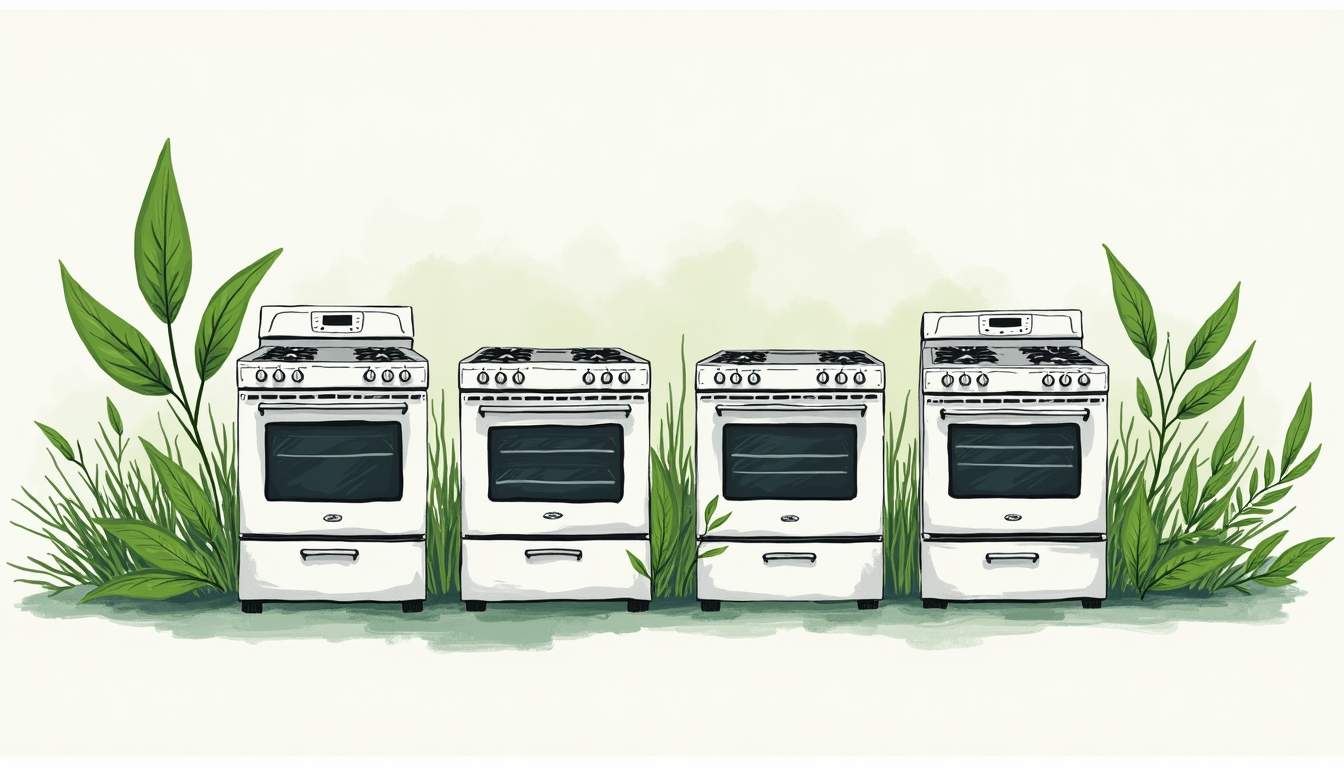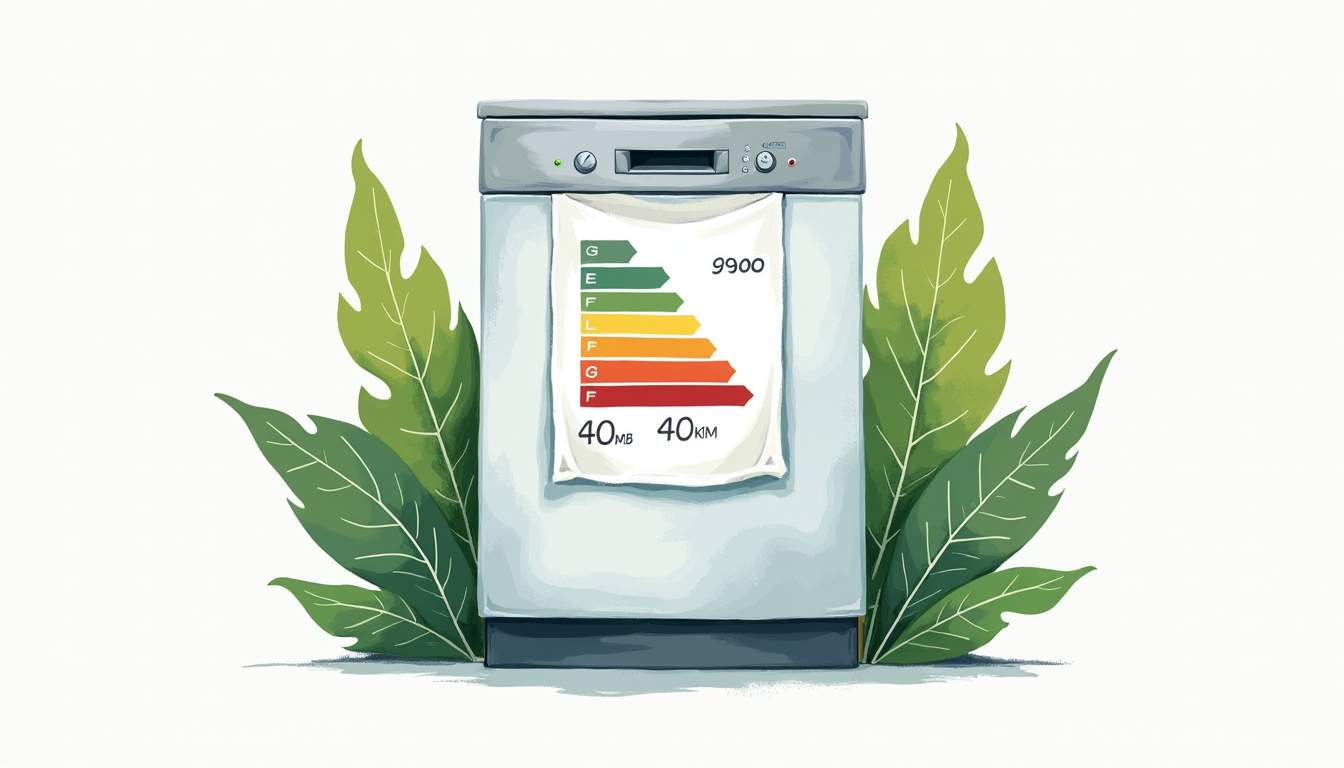
When it comes to modern kitchens, energy efficiency is a key consideration for homeowners. Selecting the right appliances can not only reduce energy bills but also minimize environmental impact. This guide will explore how to choose energy-efficient appliances for your kitchen, ensuring you make informed decisions that benefit both your finances and the planet.
Understanding Energy Efficiency Ratings
Before diving into specific appliances, it’s essential to understand energy efficiency ratings. These ratings provide valuable insights into how much energy an appliance uses compared to others in its category. The most common label you’ll encounter is the Energy Star label, which indicates that the appliance meets strict energy efficiency guidelines set by the U.S. Environmental Protection Agency.
Energy Star Certification
Appliances that earn the Energy Star certification are designed to use less energy while still delivering the same performance. For example, Energy Star refrigerators use about 15% less energy than standard models. When shopping for new appliances, look for this label as a reliable indicator of efficiency. Additionally, Energy Star products are often subject to rigorous testing and verification processes, ensuring that they consistently perform at high standards. This not only helps in reducing energy bills but also contributes to a lower carbon footprint, making it a win-win for both consumers and the environment. To explore an impressive array of reputable brands in plumbing, gasfitting, heating, and spa equipment, visit Jeff Evans for top-tier products known for their quality, reliability, and innovation.
Other Efficiency Ratings
In addition to the Energy Star label, many appliances come with additional efficiency ratings. For instance, the Federal Trade Commission (FTC) mandates that appliances display an EnergyGuide label, which provides an estimate of the annual energy consumption and operating costs. This information can help consumers compare different models more effectively. Furthermore, some appliances may also feature the Consortium for Energy Efficiency (CEE) ratings, which categorize products into tiers based on their energy performance. These tiers can help consumers identify the most efficient options available, encouraging manufacturers to innovate and improve their products continually.
Understanding these ratings is crucial not only for making informed purchasing decisions but also for contributing to a more sustainable future. By opting for appliances with higher efficiency ratings, consumers can significantly reduce their energy consumption over time, leading to substantial savings on utility bills. Moreover, as energy-efficient technologies advance, they often come with additional benefits such as improved functionality and enhanced features, making them a smart choice for modern households.
Choosing Energy-Efficient Refrigerators
The refrigerator is one of the most significant energy consumers in the kitchen. Selecting an energy-efficient model can lead to substantial savings over time. When shopping for a refrigerator, consider the following factors:
Size and Capacity
Choosing the right size refrigerator is crucial. A larger unit may seem appealing, but it will consume more energy if it’s not fully utilized. Evaluate your storage needs and opt for a size that suits your household. Additionally, consider models with adjustable shelves and compartments to maximize space efficiency. A refrigerator that fits your space and needs not only saves energy but also helps in organizing your food items better, reducing waste and spoilage.
Features that Save Energy
Modern refrigerators come with various features designed to enhance energy efficiency. Look for models with LED lighting, which uses less energy than traditional bulbs. Also, consider options with smart technology that allows you to monitor energy usage and adjust settings remotely. Features like dual evaporators can also help maintain optimal humidity levels, reducing energy consumption. Furthermore, some refrigerators are equipped with energy-saving modes that can be activated during times of low usage, such as overnight or when you’re away on vacation, ensuring that energy is not wasted unnecessarily.
Another important aspect to consider is the refrigerator’s insulation. High-quality insulation helps maintain the internal temperature, reducing the workload on the compressor and ultimately saving energy. Look for models that have thicker walls and better sealing mechanisms to prevent cold air from escaping. Additionally, check for the Energy Star label, which indicates that the appliance meets strict energy efficiency guidelines set by the U.S. Environmental Protection Agency. This certification can serve as a reliable benchmark, ensuring that you are making a sustainable choice that benefits both your wallet and the environment.
Energy-Efficient Ovens and Ranges
Ovens and ranges are essential for meal preparation, but they can also be significant energy consumers. Selecting an energy-efficient model can help reduce your kitchen’s overall energy footprint.

Convection Ovens
Convection ovens use fans to circulate hot air, cooking food more evenly and quickly. This means that you can often lower the cooking temperature and reduce cooking time, leading to energy savings. When shopping for an oven, consider models with convection capabilities for improved efficiency.
Induction Cooktops
Induction cooktops are another excellent choice for energy efficiency. They use electromagnetic energy to directly heat pots and pans, resulting in faster cooking times and less wasted heat. While they may have a higher upfront cost, the long-term savings on energy bills can make them a worthwhile investment.
Dishwashers: A Sustainable Choice
Dishwashers are often seen as energy hogs, but modern models are designed to be more efficient than ever. When selecting a dishwasher, keep the following in mind:

Water and Energy Consumption
Look for dishwashers that use less water and energy per cycle. Many Energy Star-certified models use as little as three gallons of water per load, making them a more sustainable option compared to hand washing. Additionally, consider models with eco-friendly settings that optimize water and energy use based on the load size.
Noise Levels
While noise levels may not directly impact energy efficiency, they can enhance your kitchen experience. Many energy-efficient dishwashers operate quietly, allowing you to run them at any time without disrupting your household. Look for models with a decibel rating of 45 or lower for a quieter operation.
Microwaves: The Quick and Efficient Option
Microwaves are a staple in many kitchens, providing a quick and energy-efficient way to heat food. However, not all microwaves are created equal. Here are some tips for selecting an energy-efficient microwave:

Size and Wattage
Choose a microwave that fits your cooking needs without being excessively large. A smaller microwave typically uses less energy than a larger model. Additionally, consider the wattage; higher wattage can lead to faster cooking times, which can save energy in the long run.
Inverter Technology
Microwaves with inverter technology provide a steady stream of power, allowing for more precise cooking and defrosting. This technology can help reduce energy consumption and improve cooking results. Look for models that feature this technology for enhanced efficiency.
Small Appliances: Don’t Overlook the Details
While larger appliances often steal the spotlight, small kitchen appliances can also impact energy consumption. Selecting energy-efficient models can lead to significant savings over time.
Energy-Efficient Blenders and Food Processors
When choosing blenders and food processors, consider their power consumption and efficiency. Look for models that feature energy-saving settings or those that are designed to operate at lower wattages without sacrificing performance. Additionally, consider the durability and longevity of the appliance, as a longer lifespan can offset initial costs.
Slow Cookers and Instant Pots
Slow cookers and Instant Pots are popular for their convenience and energy efficiency. They use less energy than traditional ovens and can prepare meals with minimal supervision. When selecting these appliances, look for models with programmable settings and energy-saving features to maximize efficiency.
Smart Appliances for Enhanced Efficiency
Smart appliances are becoming increasingly popular in modern kitchens. These devices connect to your home network, allowing you to monitor and control energy usage remotely. Here’s how smart technology can enhance energy efficiency:
Remote Monitoring and Control
Many smart appliances come with apps that allow homeowners to monitor energy consumption in real-time. This feature enables users to adjust settings based on usage patterns, helping to reduce energy waste. For instance, you can turn off a dishwasher or adjust the temperature of your refrigerator while away from home.
Integration with Smart Home Systems
Smart appliances can often be integrated into broader smart home systems, allowing for seamless control and automation. For example, you can set your oven to preheat while you’re preparing ingredients, optimizing energy use. Additionally, smart home systems can provide insights into energy consumption, helping you make informed decisions about appliance usage.
Tips for Maximizing Energy Efficiency
Once you’ve selected energy-efficient appliances, there are several strategies to maximize their efficiency:
Regular Maintenance
Regular maintenance is essential for keeping appliances running efficiently. Clean refrigerator coils, check seals on doors, and descale dishwashers to ensure optimal performance. Following the manufacturer’s maintenance guidelines can extend the lifespan of your appliances and maintain their energy efficiency.
Optimal Usage Practices
Using appliances wisely can also contribute to energy savings. For instance, running dishwashers and washing machines with full loads maximizes water and energy use. Additionally, using the appropriate settings for each appliance can enhance efficiency. For example, using the eco-setting on a dishwasher can significantly reduce energy consumption.
Conclusion: Making Informed Choices
Selecting energy-efficient appliances for your kitchen is a crucial step toward reducing energy consumption and promoting sustainability. By understanding energy efficiency ratings, choosing the right appliances, and implementing smart usage practices, homeowners can make informed choices that benefit both their wallets and the environment.
Investing in energy-efficient appliances not only contributes to a greener planet but also enhances the overall kitchen experience. With a wide range of options available, it’s easier than ever to create a kitchen that is both functional and eco-friendly. By following the guidelines outlined in this article, homeowners can embark on a journey toward a more energy-efficient kitchen.


